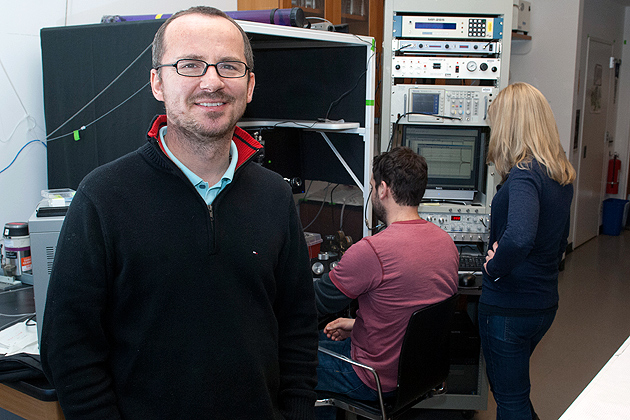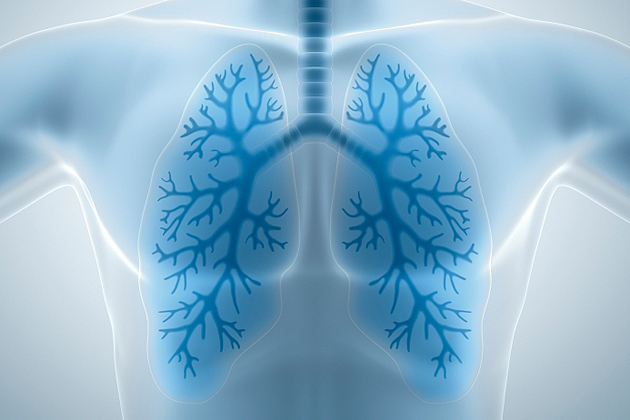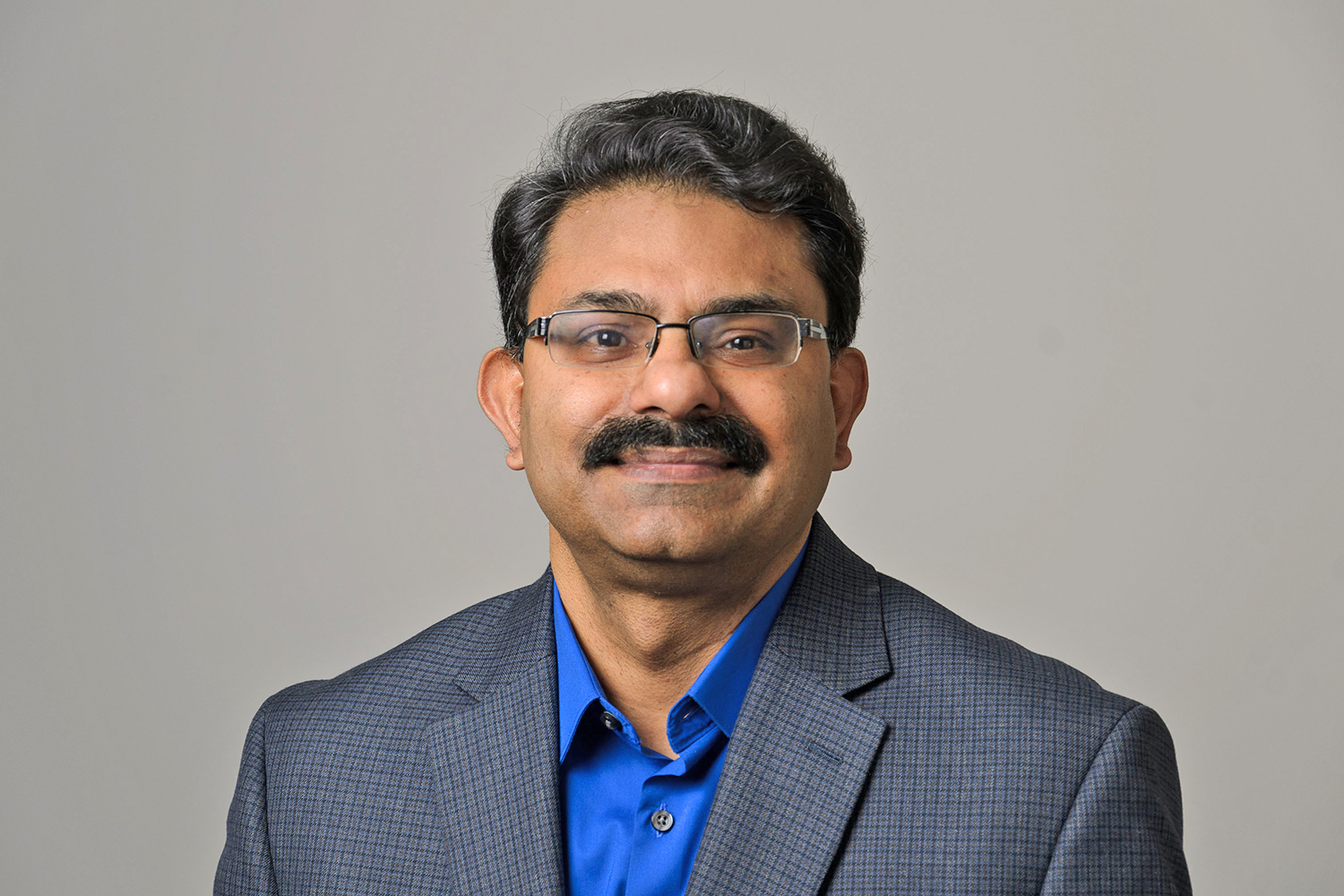
If you’re an average person (not from Lake Wobegon) you breathe in about 900 times an hour. You probably don’t think about it much, but Daniel Mulkey does. He studies what happens at the molecular level when you breathe and how your body gets the message that it’s time to take a breath.
We know that if you hold your breath, the build-up of carbon dioxide (CO2) causes the brain to get a message, “Hey – we need to breathe,” he explains. In a tiny area of the brain, a subset of neurons that are highly sensitive to CO2 project a message to the respiratory centers to get breathing underway.
But what causes the rapid electrical activity of the neurons that tells the respiratory cells to go to work?
Mulkey is looking at how ion channels – pores in the cell membrane that allow the movement of ions (such as sodium or potassium) – influence the behavior of neurons when you breathe. Ion channels act as gateways into or out of cells for the ions that determine their electrical activity.
Using just a thin slice of an animal brain, his research group isolates and studies the cells that they think are important for the regulation of breathing. Identifying these cells and the ion channels that regulate their function might eventually help in the development of drugs for people who suffer from respiratory failure in conditions such as epilepsy, SIDS, or sleep apnea.
Mulkey, an assistant professor of physiology and neurobiology who came to UConn five years ago, recently won a research promise award from the American Association of University Professors (AAUP) at UConn. He also was named a UConn Teacher for a New Era Fellow.
When he was a postdoctoral researcher at the University of Virginia in 2004, Mulkey was the lead author on a paper that identified the cells in a very small area of the brainstem – the retrotrapezoid nucleus – that are critical in respiration.
He and two former fellow postdocs at Virginia, Thiago Moreira and Ana Takakura, who are now at the University of São Paulo in Brazil, are among the handful of scientists doing in vivo respiratory studies on brain cells. Moreira’s group studies breathing behavior in live rats. He can check how the animals’ breathing behavior changes, depending on the activity of ion channels that Mulkey has identified. Mulkey’s group works on brain slices, using electrophysiology techniques to see how ion channels are regulated by CO2 or neurotransmitters that are known to influence breathing.
Although his group works at the molecular level, “It’s really satisfying to go back to the whole animal and see how these cells work,” Mulkey says. The two groups, in Storrs and in Brazil, will exchange graduate students so that each group learns the techniques of the other.
The studies in Brazil are done on both active and sedated animals. Most respiratory problems occur when you fall asleep, Mulkey notes. When you are awake, you have cues that tell you to breathe. But when you are asleep, breathing depends entirely on the activity of the CO2-sensitive cells that drive respiration.
People who suffer from congenital central hypoventilation syndrome, also known as Ondine’s curse, have a mutation specific to these cells. When they fall asleep, these people have no drive to breathe.
By learning more about the cells and the ion channels that influence their behavior, Mulkey’s basic research could guide the development of drugs to provide a solution.
“If you know the players involved, you have a target,” he says.
His research is supported by a grant from the Heart, Lung, and Blood Institute of the National Institutes of Health and by the Cure Epilepsy Foundation. One of his graduate students, Ian C. Wenker, has his own pre-doctoral research grant from the American Heart Association.
Learn more from this upcoming paper in The Journal of Physiology.
Read about the other AAUP research promise awardee, Mark Urban, assistant professor of ecology and evolutionary biology.



